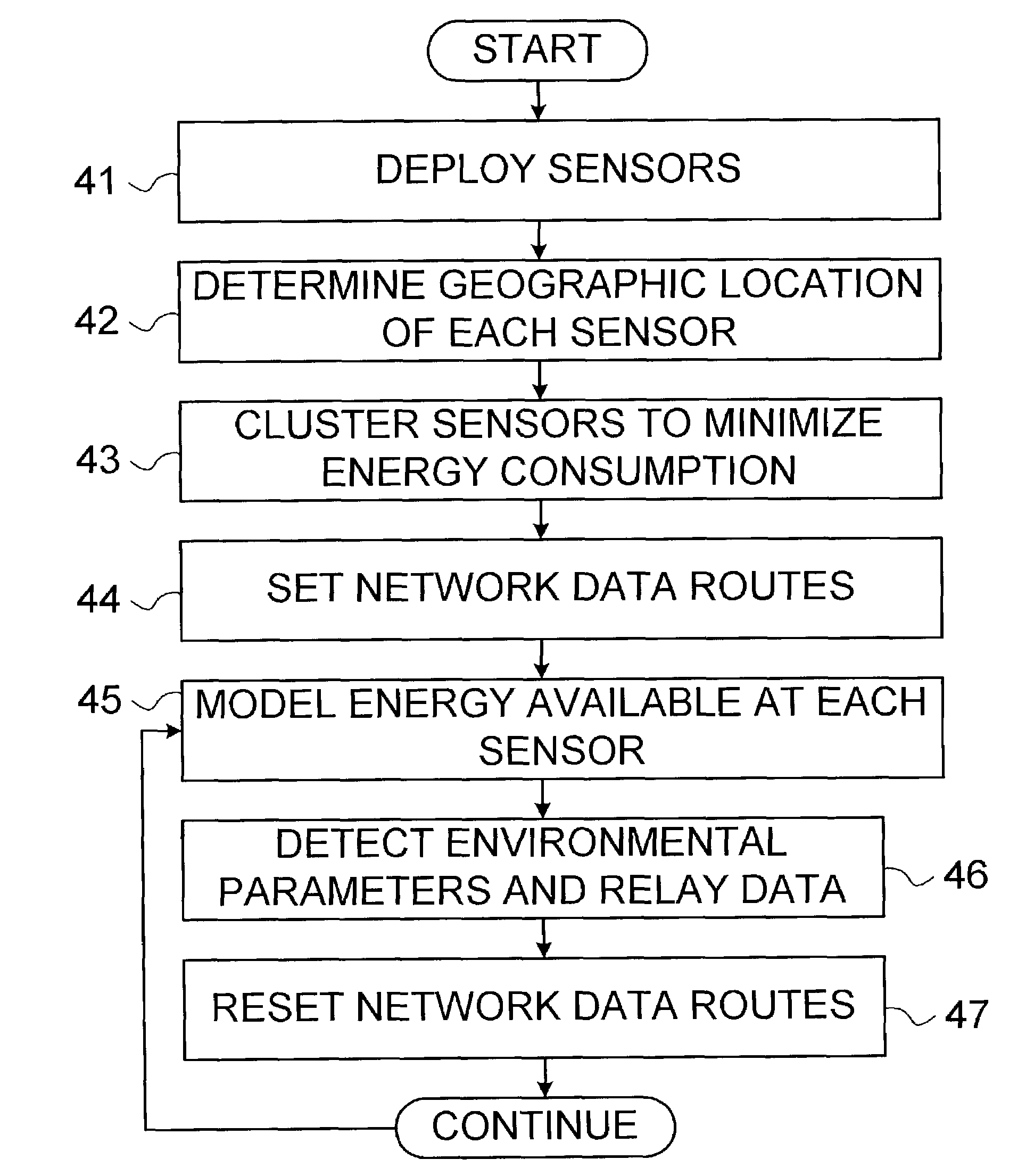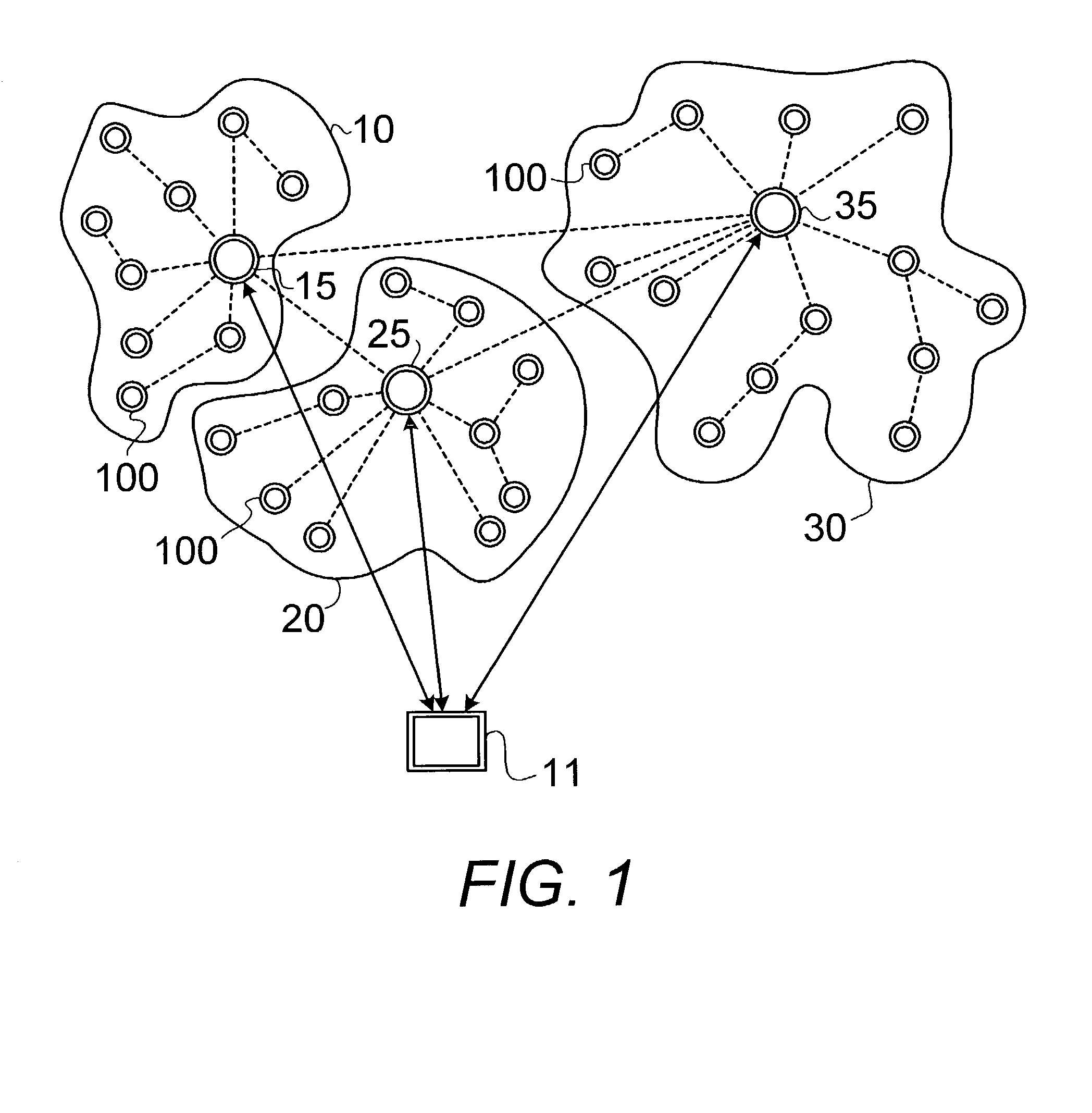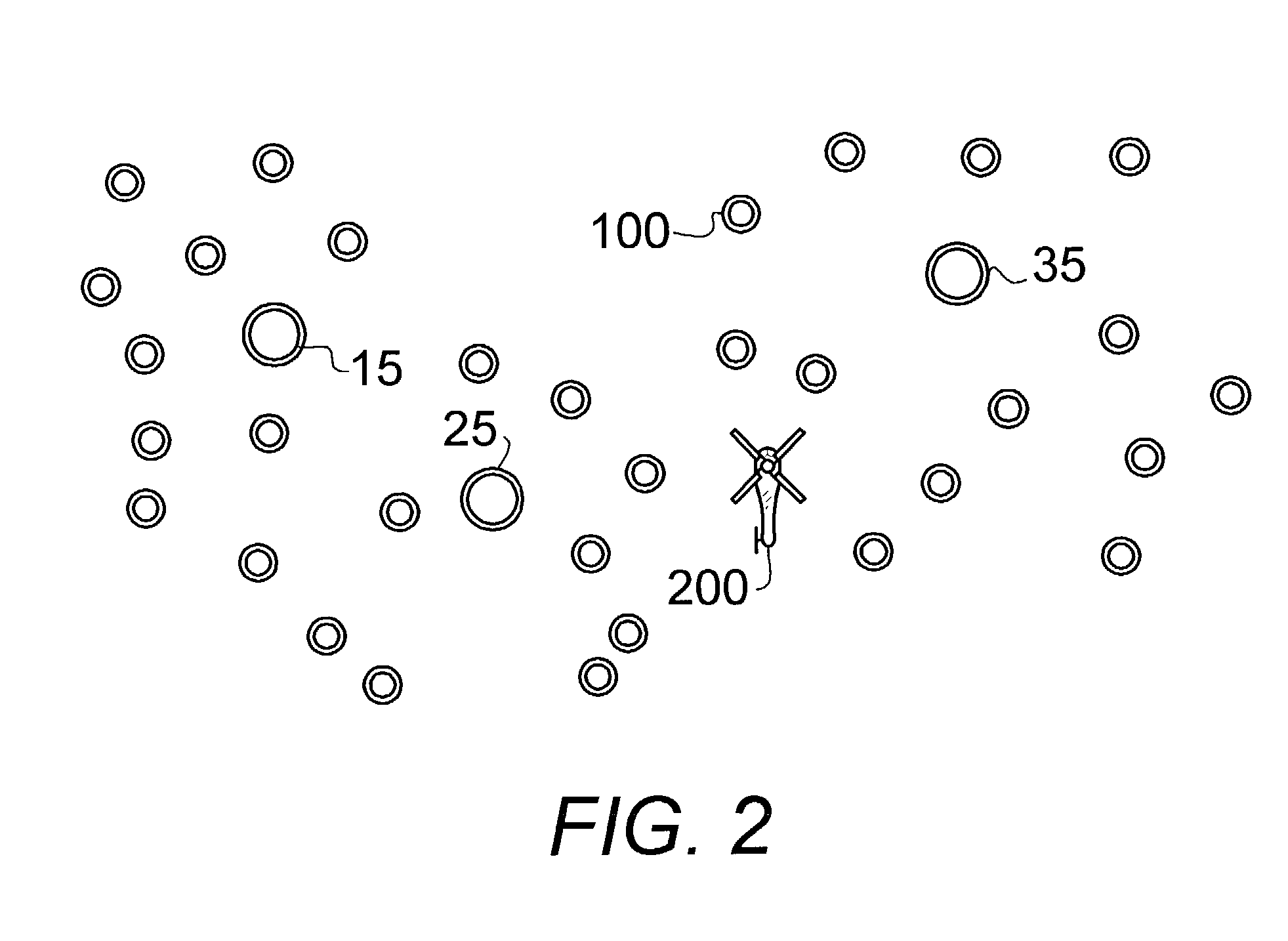Energy aware network management
a network management and energy-aware technology, applied in the field of wireless data networks, can solve the problems of limiting the duration of the battery life, energy constraints and signal interference becoming central issues, and reducing the so as to improve the system communication software, improve the energy efficiency of the system, and save the energy of individual sensors
- Summary
- Abstract
- Description
- Claims
- Application Information
AI Technical Summary
Benefits of technology
Problems solved by technology
Method used
Image
Examples
Embodiment Construction
Carrying Out the Invention
[0026]Referring to FIG. 1, the system architecture of a sensor network is depicted. In this architecture, the individual wireless sensors 100 are grouped into clusters, 10, 20, and 30, controlled by a single command node or processor 11. These wireless sensors 100 are responsible for probing the environment to detect a target or an event. The sensors 100 are typically only capable of short-range radio communication. Every cluster, 10, 20, and 30, has an associated gateway node, 15, 25, and 35, that manages sensors in the cluster and that includes a cluster-wide routing table for its sensors. In one embodiment, the sensors 100 are clustered based on communication range. In other embodiments, the sensors 100 are clustered based on the number, types, and geographic locations of the individual sensors 100.
[0027]Sensors receive commands from and send readings to its gateway node, which processes these readings. A gateway node can track events or targets using re...
PUM
 Login to View More
Login to View More Abstract
Description
Claims
Application Information
 Login to View More
Login to View More - R&D
- Intellectual Property
- Life Sciences
- Materials
- Tech Scout
- Unparalleled Data Quality
- Higher Quality Content
- 60% Fewer Hallucinations
Browse by: Latest US Patents, China's latest patents, Technical Efficacy Thesaurus, Application Domain, Technology Topic, Popular Technical Reports.
© 2025 PatSnap. All rights reserved.Legal|Privacy policy|Modern Slavery Act Transparency Statement|Sitemap|About US| Contact US: help@patsnap.com



